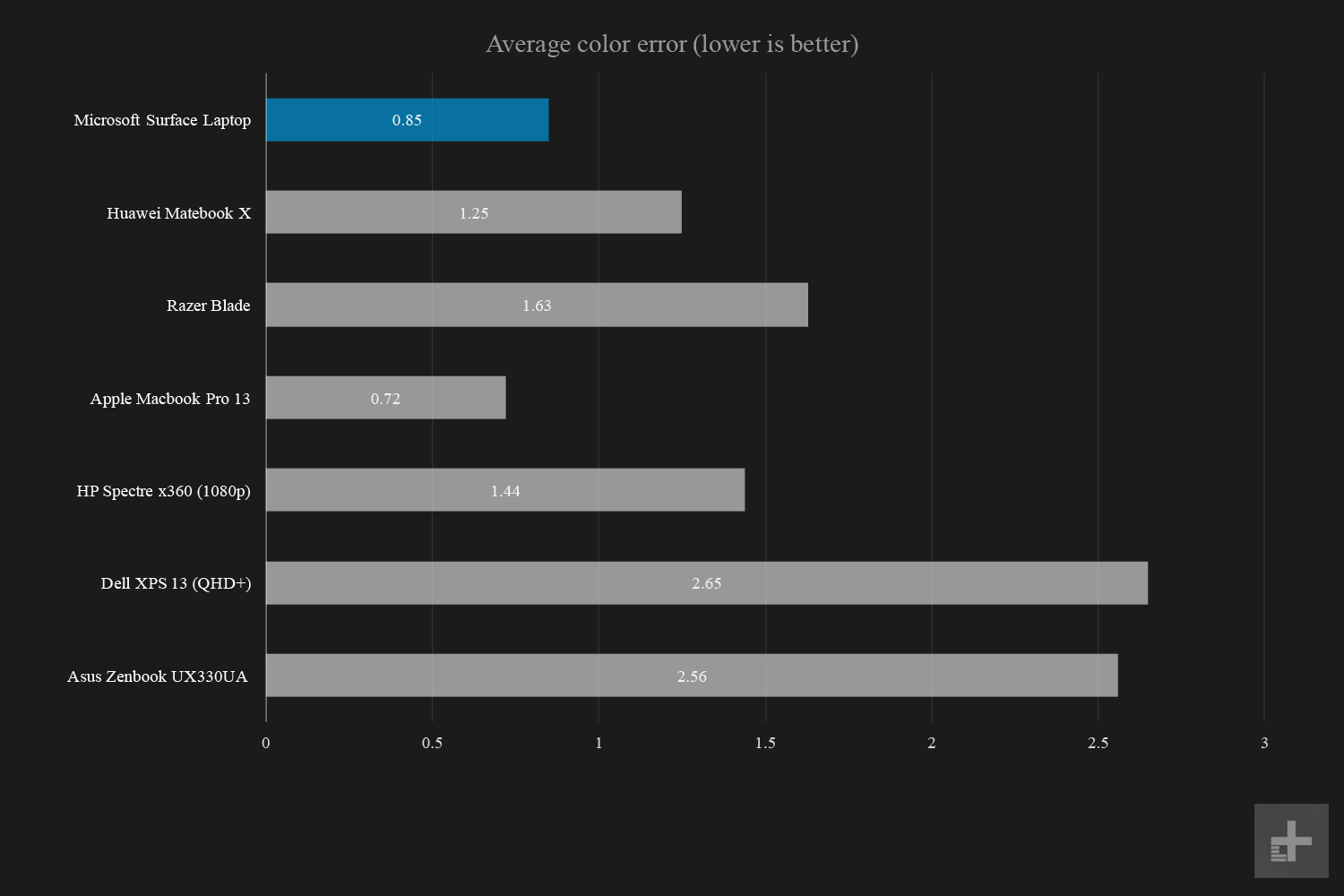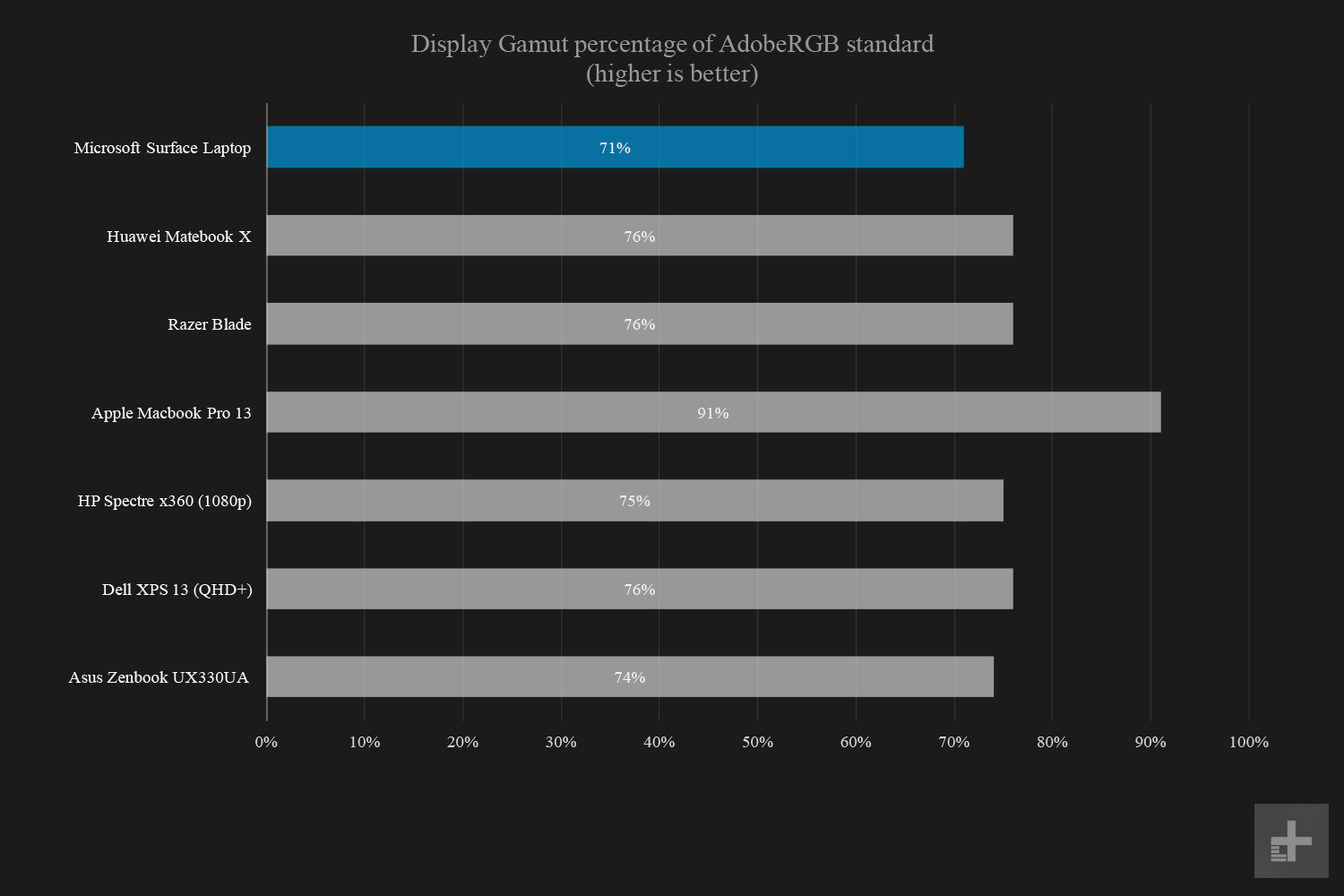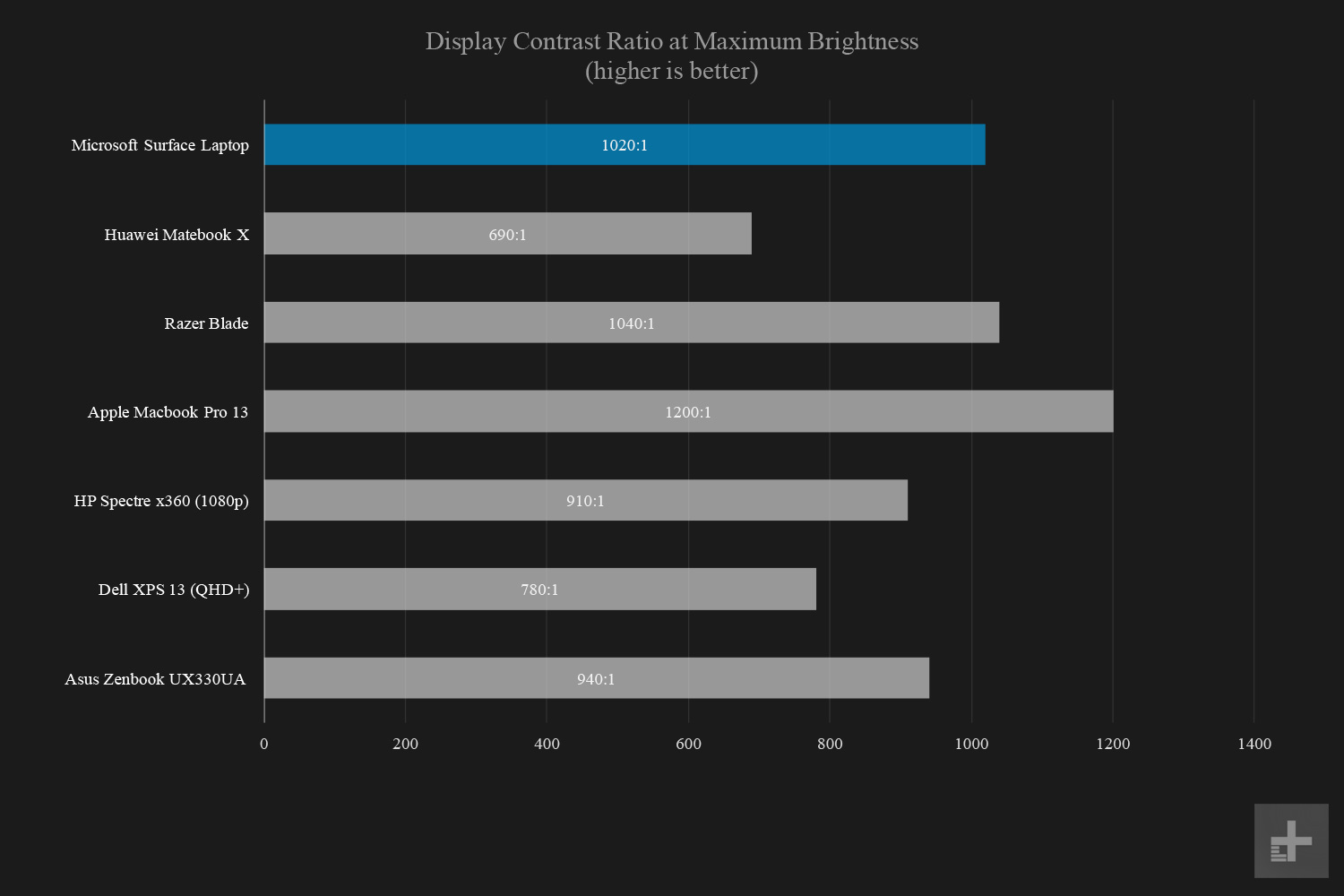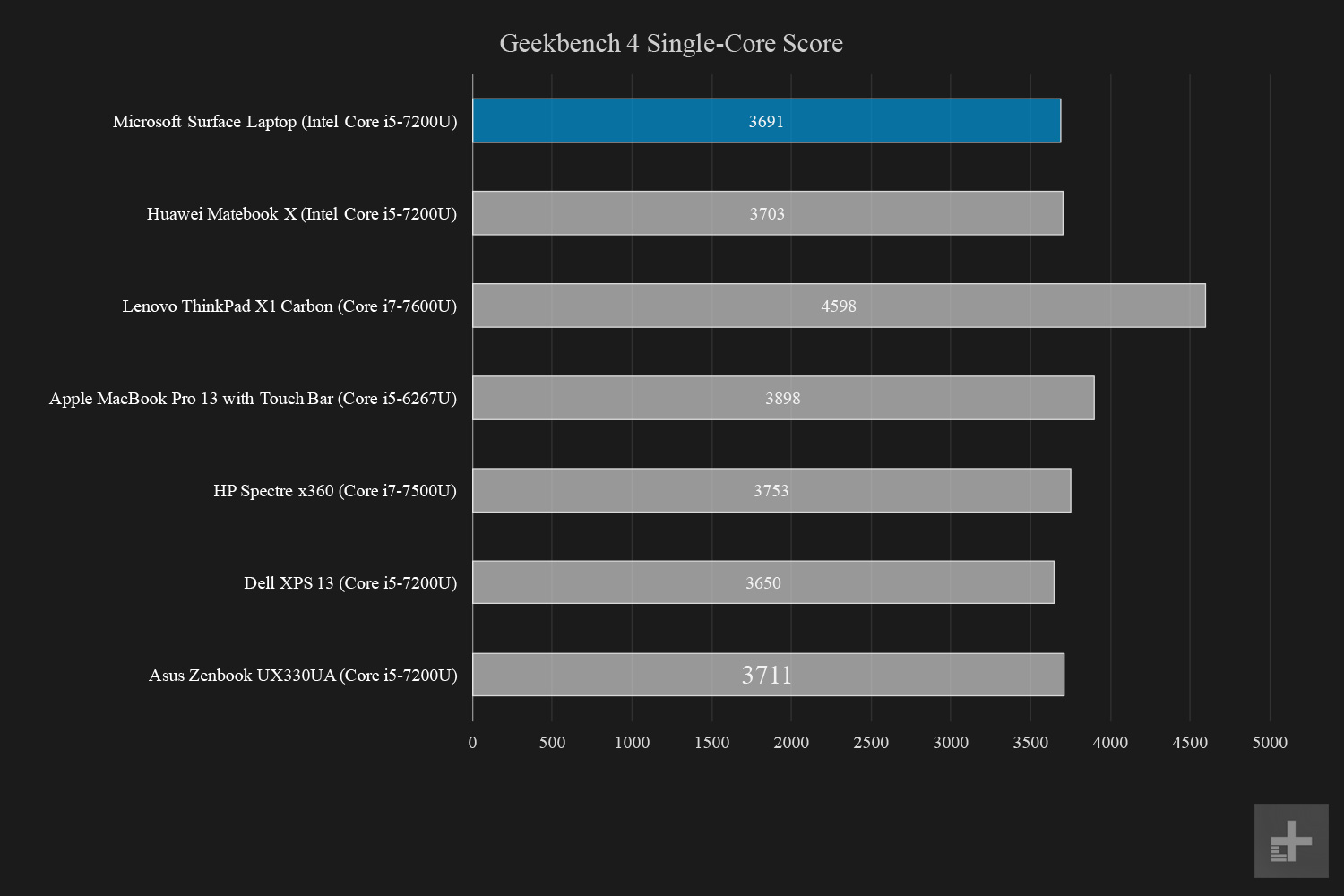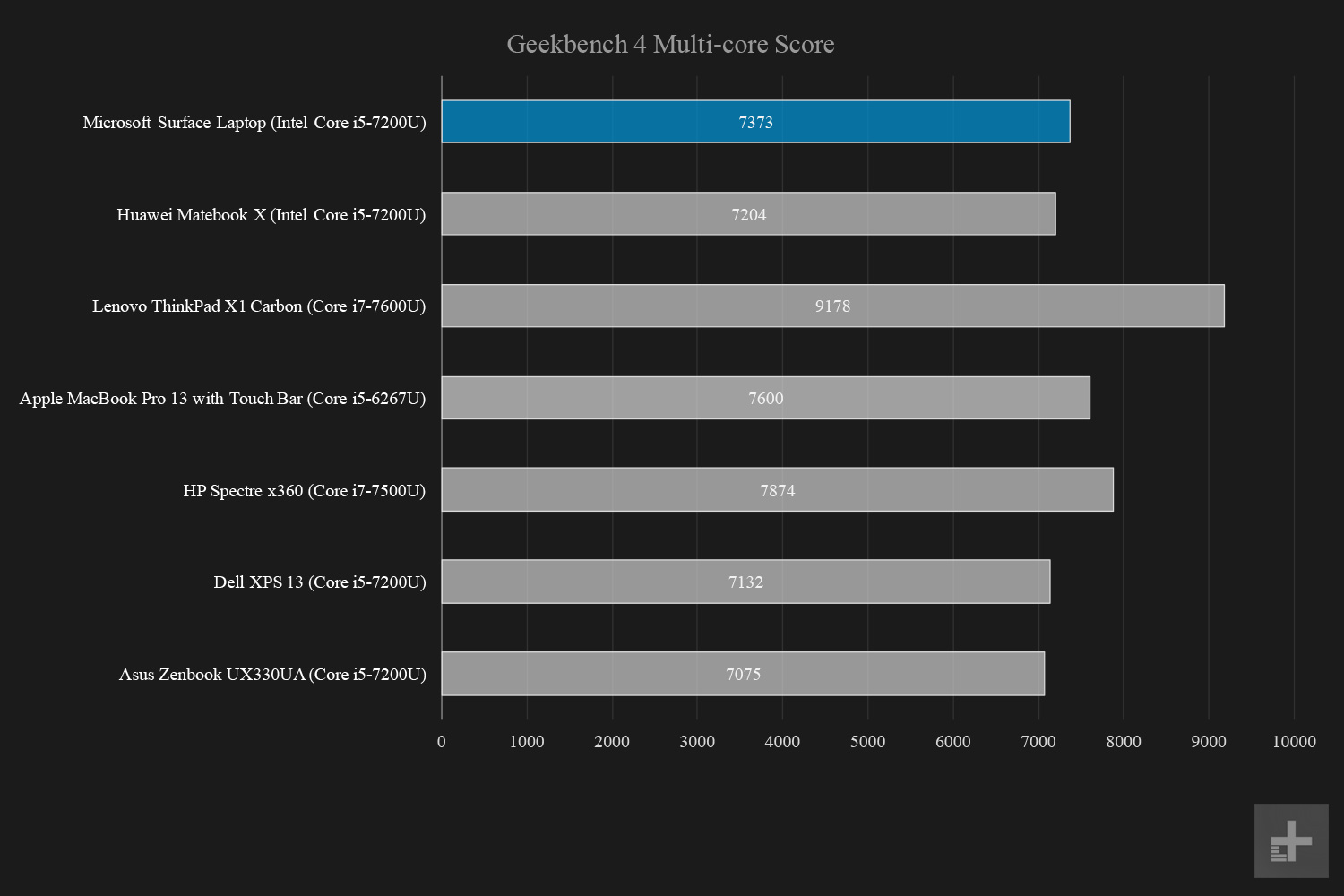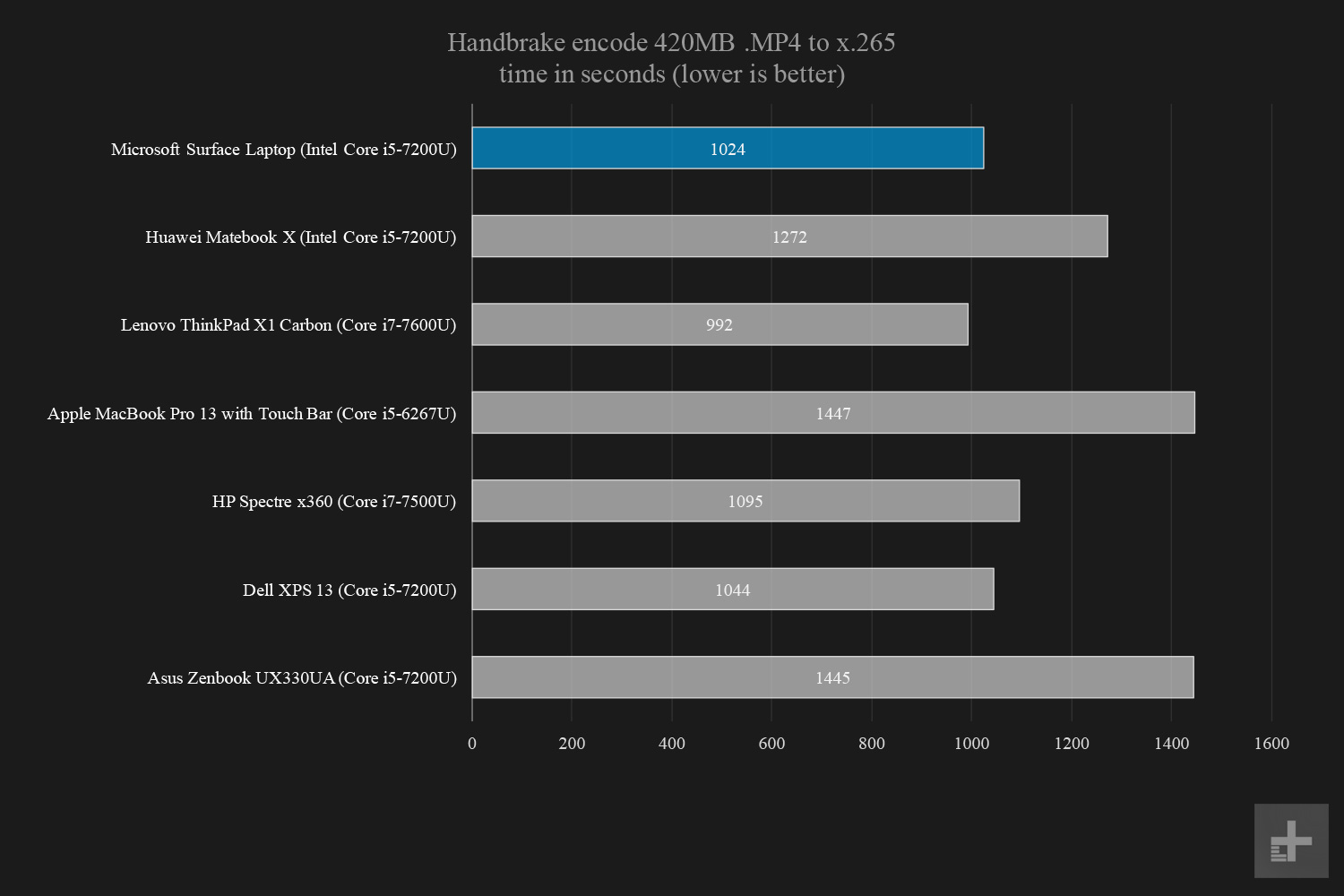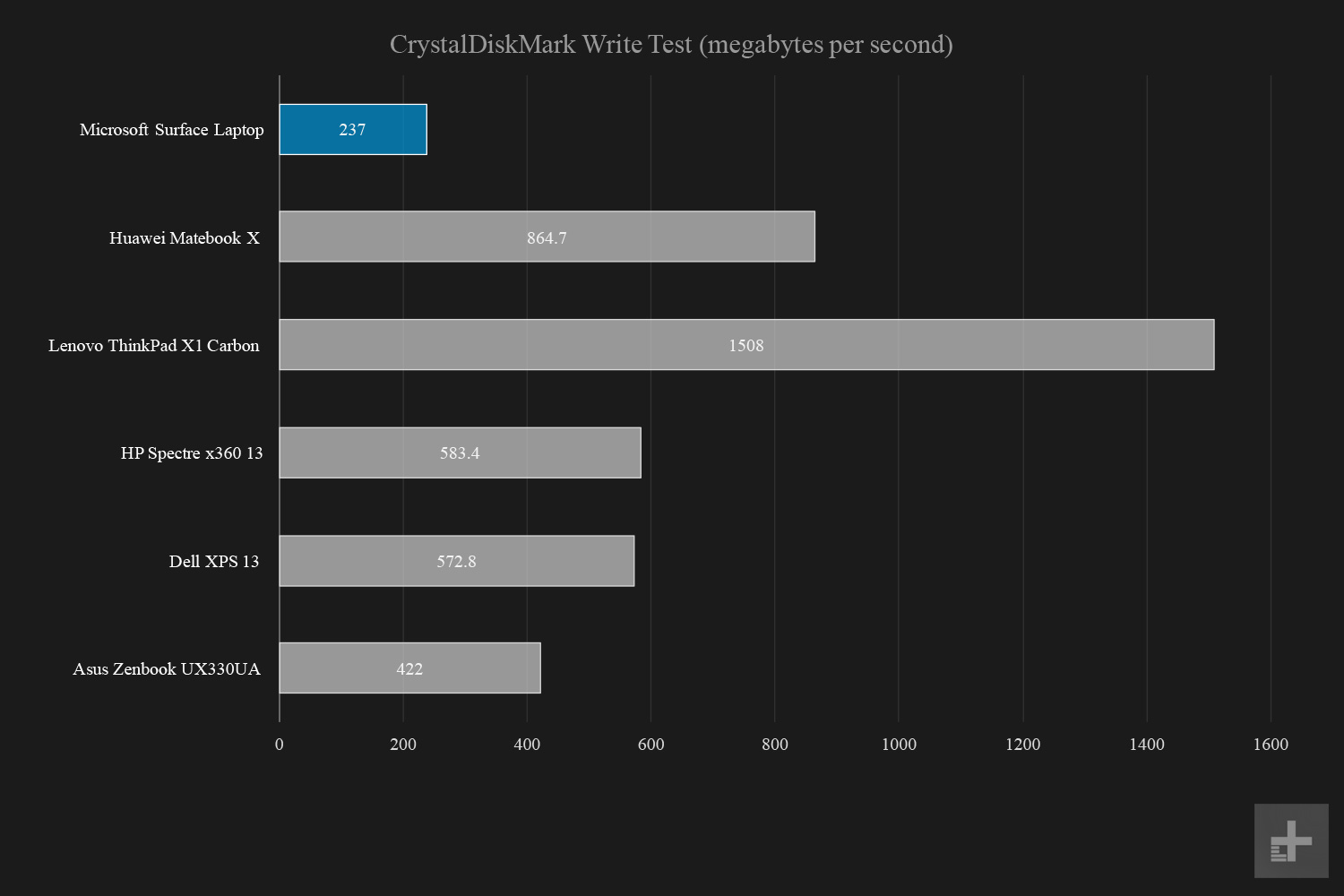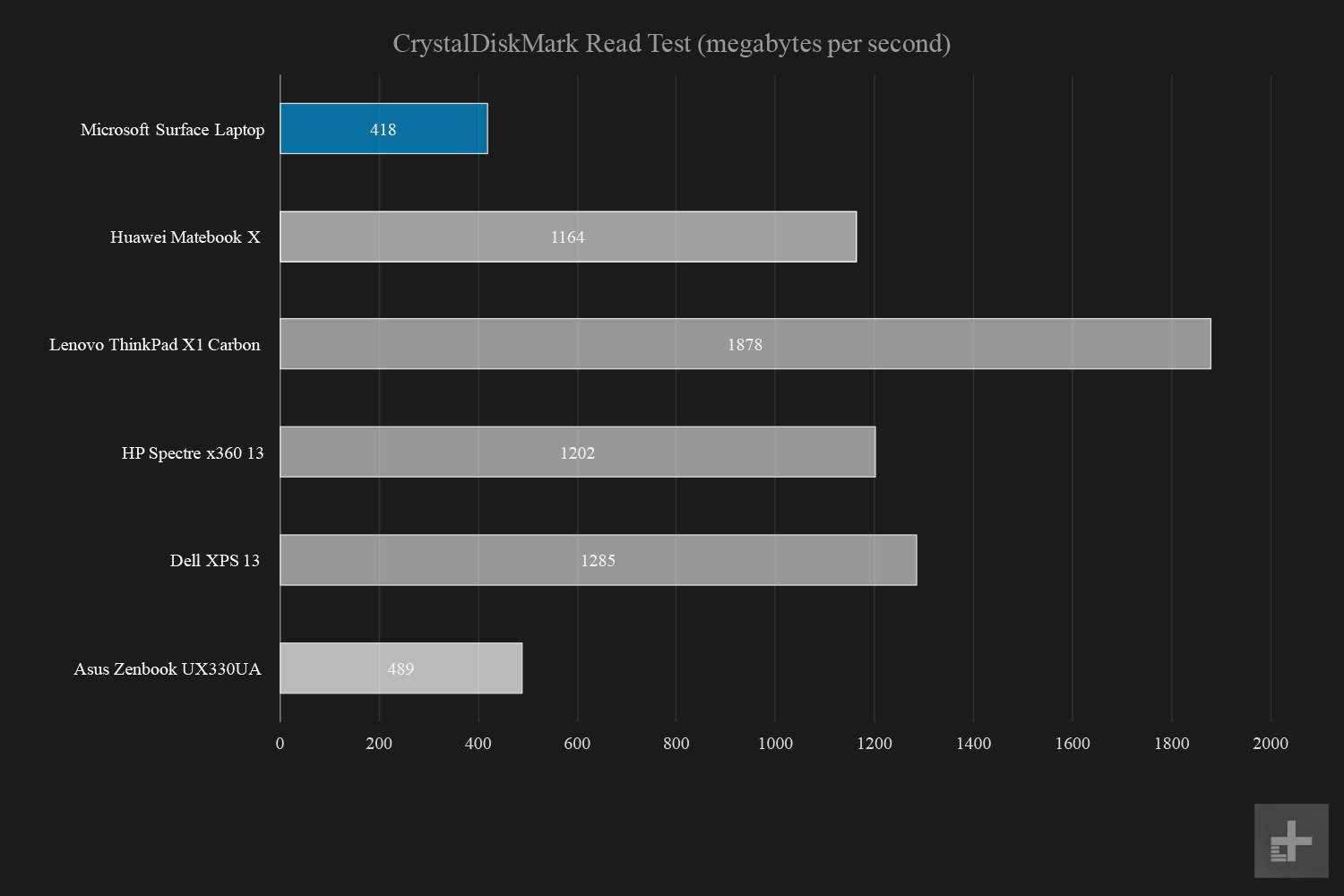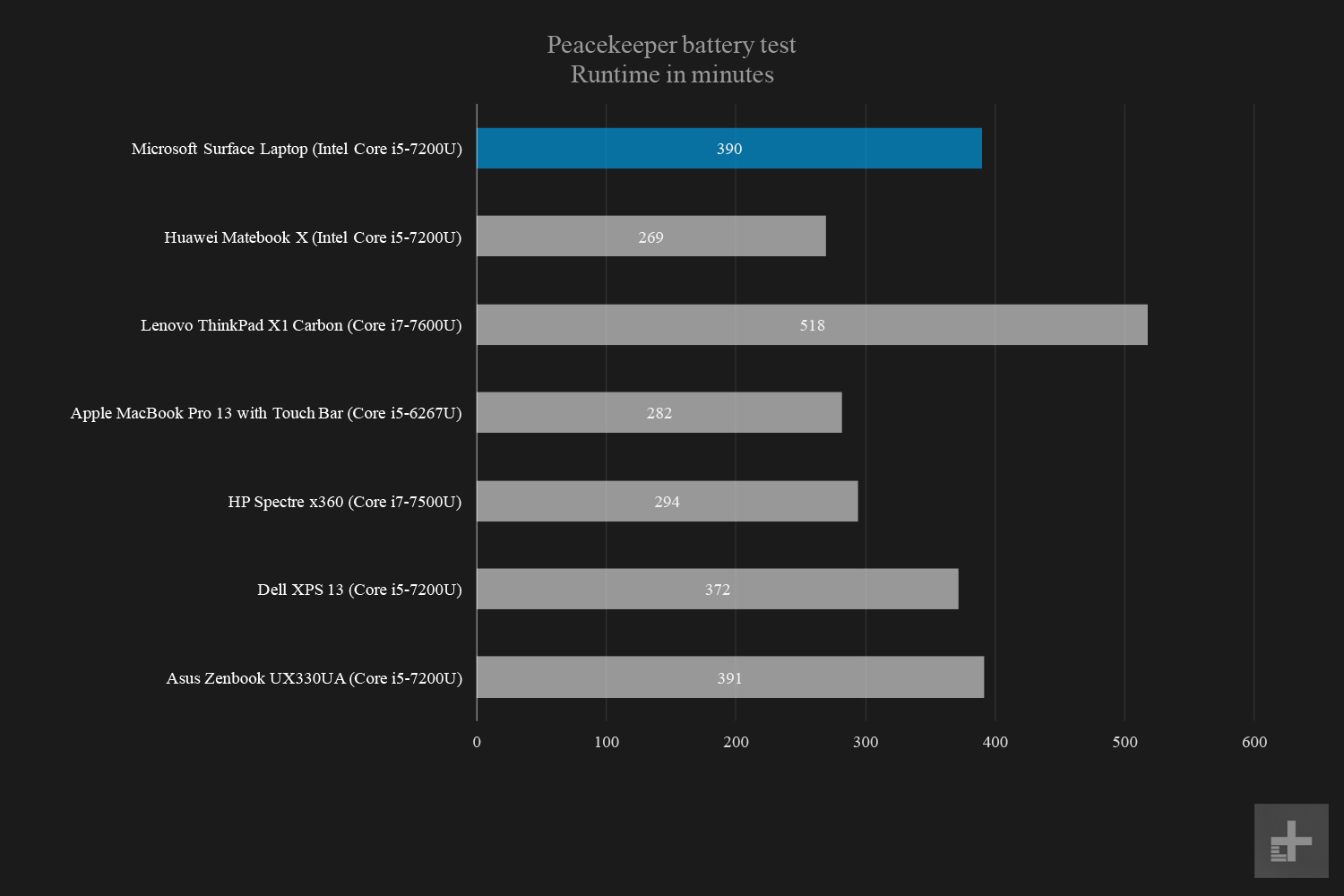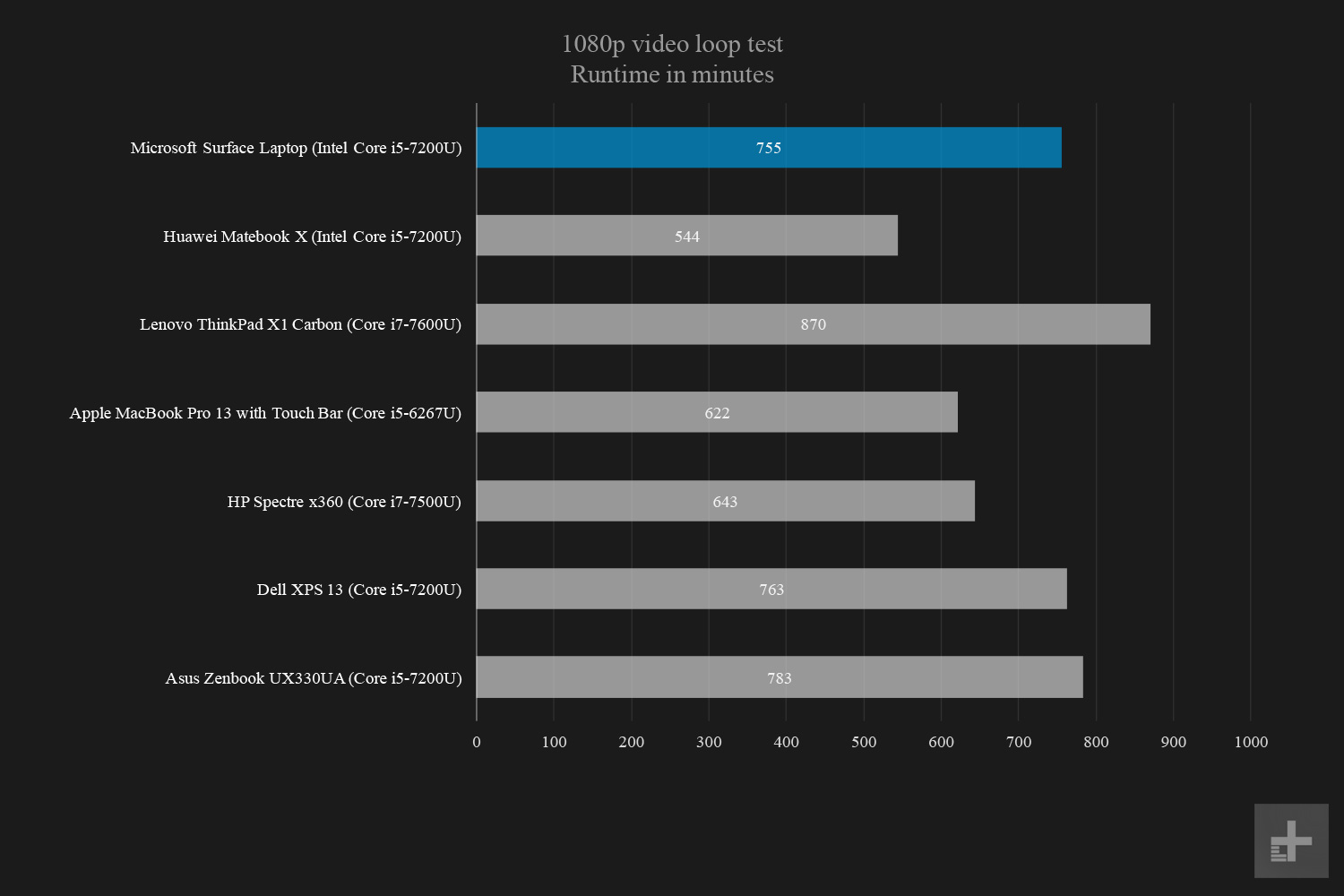“Microsoft’s Surface Laptop will lure you in with Alcantara fabric, then cage you into Windows 10 S.”
- Great keyboard
- High contrast, color accurate display
- Alcantara fabric feels wonderful
- Solid processor performance
- Windows 10 S restricts app selection
- Needs more ports
- Disappointing hard drive
A Microsoft laptop. Suggesting it a decade ago would lead only to raised eyebrows and brief chuckles. But these days, the Surface brand has become a mainstay in the PC world. We currently have our choice between the Microsoft’s Surface Pro, Surface Book 2, Surface Studio, and even Surface Go, each proving the company can build hardware that pushes the PC forward in their own way. Why not produce one of the best laptops, too?
Our Surface Laptop review unit arrived with an Intel Core i5-7200U processor, 8GB of RAM, and 256GB solid state drive, options that push the price up to $1,300. That’s a lot, but it’s not unusual in the world of high-end laptops. These days, that configuration often sells for $1,000, due to the fact that Microsoft hasn’t updated it since its launch in June of 2017.
But with all the other options at hand, is the year-old Surface Laptop still a good buy?
Beautifully mundane
The Surface Laptop is intentionally built for anonymity. While its all-metal chassis is available in four color options – ours came in Cobalt Blue – none of them stand up and shout. A similar subtle touch graces its profile, which is hard-edged, serious, and tapered at extreme angles along each edge. Even the square, precision-cut exhaust vents look like they mean business.
Open it up, though, and the Laptop shows its softer side. Alcantara fabric lines the entire interior, giving the system a warm, inviting feel. Dell’s XPS 13 takes a similar tack, but with carbon fiber instead of fabric. We love this trend, as it instantly makes the simple act of opening and using a laptop more fun.
You might worry the Alcantara will wear, and it probably will — but no more than other materials. We’ve used numerous Surface Pros with the Alcantara version of the Type Cover, and haven’t noticed an issue with stains or wear. It might be a problem if you eat spaghetti while holding the plate directly over your laptop, but otherwise, it’s fine.
The Surface Laptop’s 13.5-inch screen invites comparisons to other 13-inch laptops, like the Dell XPS 13, and HP Spectre x360. Some might even consider it alongside a 12.5-inch laptop like the Huawei MateBook X.
That’s a good thing, though, as it offers a reassuring sense of weight and durability. Microsoft’s laptop also comes in a shave under three pounds, which beats the MacBook Pro 13, and is right in line with the Dell’s smaller XPS 13.
Where are the ports?
The Surface Laptop isn’t a tiny laptop. There’s room for great connectivity, and Microsoft hasn’t taken advantage of it.
There’s room for great connectivity, and Microsoft hasn’t taken advantage of it.
USB connectivity is provided by one, lonely USB 3.0 port, which is paired with mini-DisplayPort, and a headset jack. The proprietary Surface Connect provides power, and can expand connectivity when paired with a Surface Dock. Wireless options, meanwhile, include the usual pairing of 802.11ac Wi-Fi with Bluetooth 4.0.
We can’t help but feel disappointed in what the Laptop offers. It’s arguably even worse than the Apple MacBook Pro 13. While it only has cutting-edge Thunderbolt 3/USB-C ports, they’re far more capable, and there’s four of them.
A front-facing 720p webcam sits above the display. It’s compatible with Windows Hello’s facial recognition, and works within seconds. You’ll want to give Hello login a go if you haven’t tried it already.
This is how keyboards should be
A spacious keyboard sits snuggly inside the Surface Laptop’s Alcantara interior. Here, at least, Microsoft has made full use of both horizontal and vertical space. The keyboard is large, yet there’s ample room between keys. Pressing any of them rewards with long, full travel and a firm, yet forgiving, bottom action. It’s a joy to type on this laptop.
Keyboard backlighting is standard. Several levels of adjustment are provided, and the brightest is clearly visible even in a lit room. Light-leak around the corners of keys is minimal, so you won’t see any annoying shaft of light sneaking out at odd angles.

The touchpad is less impressive. It’s a Windows Precision Touchpad compatible model, as we’d expect, and it does its job. We wouldn’t mind a larger surface, however, or a texture that felt more responsive. We’re not disappointed in the quality, so much as the unharnessed potential. Competitors like Apple and HP have found clever ways to build far larger touchpads into their laptops without sacrificing quality.
Luckily, the Surface Laptop does include one large touch surface – the screen. Though it’s no 2-in-1, Microsoft wisely decided to add a touchscreen anyway. We didn’t use it much, but we were glad to have it when we wanted it. It’s even compatible with the Surface Pen and Dial.
Windows 10 S – what do you think the “S” stands for?
In fact, the touchscreen is more essential to the Surface Laptop than most competitors. This PC doesn’t run the Windows 10 you’re used to. It runs Windows 10 S, which can only run apps from the Windows Store. Many them are built with touch as a priority, as the Windows Store originally debuted alongside the heavily touch-focused Windows 8. Developers can now port “normal” Windows 10 applications into the Store with relative ease, but they’re the minority. Most apps in the Store have big, bright, touch-sensitive buttons that just beg to be mashed.
Most software we use to test laptops won’t run on Windows 10 S, so we eventually upgraded to Windows 10 Pro for this review.
However, the Windows Store has a limited selection of apps, and that’s a problem. By default, the Surface Laptop can’t run any apps outside the Store. That means it can’t launch Google Chrome, Firefox, Steam, Discord, or the full version of Photoshop. Most software we use to test laptops won’t run on Windows 10 S, so we eventually upgraded to Windows 10 Pro for this review.
Microsoft’s justification focuses on the simplicity and manageability of Windows 10 S which, according to the company, is sorta-kinda meant for education institutions, and kinda meant for business, too. Any organization that’s buying and managing hundreds, perhaps thousands, of devices will like that a Surface Laptop can’t Tor over to The Pirate Bay and suck down malware.
But for you – the person looking to buy a Surface Laptop for yourself – Windows 10 S is nothing but bad news. There’s no carrot at the end of this stick. You won’t be able to use the apps you want, and you get nothing in return. It’s not even possible to use regedit or the command window, which means certain tweaks and customizations aren’t accessible.
At least the operating system looks identical to Windows 10 Home or Pro. Unlike Windows RT, which reimagined Windows almost from the ground up, Windows 10 S keeps its differences confined to the Store. Upgrading to Windows 10 Pro – which is free this year, and a $50 upgrade after – takes less than ten minutes, and doesn’t erase or change any data on the machine.
For some, the ease of upgrading will make Windows 10 S a non-issue. Those who expect their laptop to “just work,” however, will be annoyed – and woe to the poor student or employee who finds themselves given a Surface Laptop without rights to an upgrade. Want to play a round of Hearthstone to relax after a long day? Too bad. You can’t.
All about that display
Like other Surface devices, the Laptop offers an unconventional display. Its 3:2 aspect ratio and 13.5-inch diagonal length make for a screen that looks much larger than numbers suggest. While it contributes to the Laptop’s bulk, it also serves up gobs of beautiful, usable space. Taller aspect ratios are coming back into style, and we love it.
Resolution is 2,256 × 1,504, or 201 pixels per inch (PPI). This is high enough to provide satisfying sharpness, but it’s below the MacBook Pro 13’s 220 PPI, and well behind the Microsoft Surface Pro’s 267 PPI. HP’s Spectre x360 can pack in up to 330 PPI with its optional 4K panel.
There’s more to quality than pixel count, though. Color and contrast matter too, and that’s where the Surface Laptop shines. Our tests found the PixelSense screen delivered a contrast ratio of up to 1,020:1, beating every competitor except for Apple’s MacBook Pro 13, which hit 1,200:1.
We were also surprised to see an average color error score of just 0.85. Lower is better in this test, and an error below one is hard for the human eye to notice. Again, the MacBook Pro 13 is the only competitor we’ve tested that scored better. Most laptops have a color error score north of two.
The display is also bright, and boasts a nearly perfect gamma score. That means it renders content at almost exactly the brightness intended, without blowing out highlights, or skipping shadow detail.
You’ll notice the benefit of these benchmark scores every day. The excellent contrast ratio is noticeable even when viewing a document, as inky black letters seem to burrow into bright, white pages. Movies and games of course look beautiful, especially in dark scenes, where the high contrast ratio and accurate gamma can draw excellent detail out of shadowy scenes, while letting pure, dark shadows to suck you into their abyss.
The only issue is, again, the resolution. 201 pixels per inch is likely more than you need, but it’s also less than most competitors offer at similar pricing. The lack of screen options hurts the Microsoft here. As more upgrades raise the price, the less competitive the display will seem next to Apple, Dell, and HP alternatives.
Speakers get checked off the list
Search for the word “audio” on the Microsoft’s Surface Laptop product page, and you’ll see no results. Audio quality isn’t a priority. While the speakers – which are hidden under the keyboard — pump out acceptable volume, they quickly fall into distortion when asked to handle music, or action scenes in movies. We recommend headphones.
A strong showing from the Core i5
The Surface Laptop is available with Core i5 or Core i7 processors, but our review unit came with a Core i5-7200U alongside of 8GB of RAM. Such hardware isn’t going to get anyone’s pulse racing, but it’s common for a high-end laptop balancing performance and battery life.
In Geekbench 4, the Surface Laptop performs exactly as expected, scoring 3,681 in the single-core test and 7,373 in the multi-core test. These numbers are within a few hundred of almost every other Core i5-7200U laptop we’ve tested.
We saw more variance in Handbrake, however, where the Laptop shaved a couple of minutes off its conversion test, compared to similar systems. Microsoft did its homework when designing this device. It can run flat-out with less thermal throttling than most rivals, which nets it a great Handbrake score.
Sad about the slow hard drive
Microsoft of course ships the Surface Laptop with a solid state drive – a 256GB model, in our review unit. While the drive uses the latest connection standards, it does not deliver the performance we would expect.
Squint all you’d like. There’s no way to make these numbers look good. The drive simply can’t keep up with more modern hardware found in competitors like the Apple MacBook Pro 13, Dell XPS 13, and HP Spectre x360. These alternatives more than double the speed of the Surface Laptop.
What’s the problem? Part of it seems to be the drive itself. According to Toshiba’s catalog, the drive (model number THNSN0256GTYA) is among the slower M.2 drives available. Yet even so, the drive’s write performance does not come close to the level quoted by Toshiba. We have reached out to Microsoft for comment.
That’s not something you’ll notice in everyday use, but it’ll absolutely be noticeable if you transfer or move large files regularly.
Winning the race of the turtles
This laptop isn’t for gamers. That should come as no surprise. It’s not advertised for gaming, and it’s rare to see a 13-inch class system that is. Still, you might want to try and play a game now and then, so…can you?

Maybe. As you can see above, the Surface Laptop actually handles itself well for a laptop with a Core i5-7200U processor and Intel HD 620 graphics. It defeats most likely competitors, though not by a large margin. That means 3D games will often open and run, but the game experience won’t be ideal.
We took a peak at real-world game performance with Sid Meier’s Civilization VI, which was tested at 1080p resolution with detail settings at the lowest possible preset. The game returned an average of 17 frames per second. While technically playable, it’s not the way you’d want play the game.
Battery life black magic
A look at the Surface Laptop’s specification sheet doesn’t offer much hope. While its official product page doesn’t quote a capacity, Windows Battery Report told us it offers 47 watt-hours of juice. That’s not a lot for a laptop. It’s less than the Apple MacBook Pro 13, and a lot less than the Dell XPS 13, which can handle 60 watt-hours.
Yet the Laptop refuses to be defined by a single number. It lasted six hours and a half hours in the Peacekeeper web browsing benchmark, a heavy-load use case that constantly refreshes. Our more moderate web browsing script, which flips through a pre-determined set of websites, extended life to almost eight hours. And a 1080p video loop, our easiest battery test, helped the Surface reach 12 and a half hours.
These numbers are in range of the competition, as you can see in the graph above. Lenovo’s ThinkPad X1 Carbon remains a standout in battery life, easily defeating the Surface laptop. The Asus Zenbook UX330UA and Dell XPS 13 with Core i5 processor also generally outpace the Laptop, though only by a bit. The HP Spectre x360 and Apple MacBook Pro 13 go down in defeat.
While the Surface Laptop is not setting any records, we respect what it squeezes out of a relatively small battery. Microsoft has clearly put some work into optimizing endurance. Its battle against the MacBook Pro 13 is the most telling, as the two have nearly the same battery capacity. Yet Microsoft easily earns a win. Take that, Cupertino.
Warranty information
The usual one-year limited hardware warranty is standard on the Surface Laptop. While Microsoft offers extended warranty plans on other Surface products, they’re not offered for the Laptop yet.
Our Take
We believed, given its past successes, that a Surface Laptop would be an easy win for Microsoft. Compared to the Pro, Book, or Studio, it’s a simple machine. Yet the company found a way to complicate matters with Windows 10 S, and fails to deliver in key areas like screen quality and hard drive performance.
Is there a better alternative?
The Dell XPS 13 and HP Spectre x360 remains our favorite high-end PC laptops, and both easily shove the Surface aside. The XPS 13 looks and feels more svelte, yet retains better hard drive performance and superior screen options. The Spectre x360 is about equal in size, and won’t last as long on a charge, but it’s a 2-in-1 and it can be purchased with a 4K display.
Even the Asus ZenBook UX330UA is a legitimate option that can save a lot of money. Though it only has a 1080p display, the Asus $700 laptop is otherwise comparable. It offers a newer version of the same processor, the same type and size of hard drive, and just as much RAM. It has better connectivity, too, despite the fact it’s slightly lighter and thinner.
Apple’s MacBook Pro 13 is another possible alternative. We’d pick the Surface Laptop over the MacBook Pro 13, but the Mac does have points in its favor including a much faster hard drive, better display, and more ports.
How long will it last?
Like most new laptops, the Surface Laptop should last a half-decade or more. Nothing about it will feel outdated soon except, perhaps, for its lone USB 3.0 port.
Should you buy it?
No. The Surface Laptop is an impressive device in many ways, but it’s not without its warts. Even if you can snag it for a few hundred dollars off, there are better options out there for your money.





